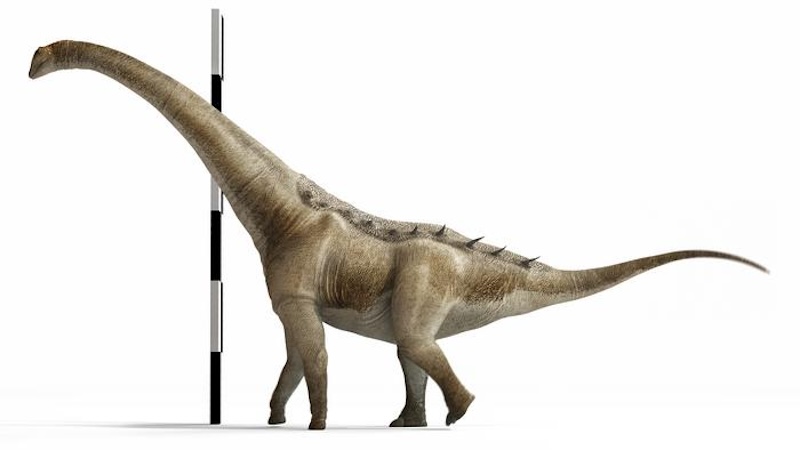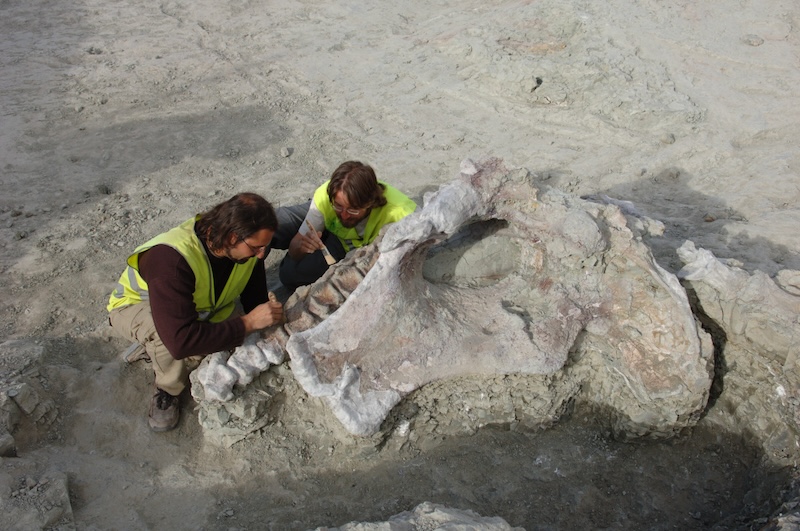
Meet Q. pintiquiniestra, an enormous vegetarian dinosaur from ancient Spain
A new species of titanosaur – a variety of large long-necked plant-eating dinosaur – was recently recovered from a fossil bed near Cuenca, Spain. The newly identified animals lived around 73 million years ago, during the late Cretaceous Period.
Scientists who identified the oversize dino announced their discovery this week in the journal Communications Biology. Their findings were published on September 4, 2024.
And its name is a mouthful. The group called the dinosaur Qunkasaura pintiquiniestra.
A treasure trove of dinosaur fossils unearthed in Spain
In 2007, thousands of fossils were collected at a site called Lo Hueco – Spanish for “The Hollow” – in mountainous south-central Spain. The fossils were discovered during work to install rails for a high-speed train between Madrid and Valencia.
Among the discoveries were partial skeletons of sauropods, a group of long-necked plant-eating dinosaurs that includes titanosaurs. Titanosaurs were the largest animals to ever live. This is a rare find in Europe. Scientists are still studying the fossils. And they think there could be more new species awaiting discovery at Lo Hueco.
Q. pintiquiniestra is a notable find from this fossil collection. And that’s because many bones from an individual dinosaur were recovered and pieced together, including backbones and ribs, as well as part of the pelvis, tail and legs. As a result, scientists were able to identify it as a new dinosaur species due to the unique features of its bones.

Discoveries are a revelation about European dinosaur evolution
Pedro Mocho, of the University of Lisbon, is the lead author of the paper. In an interview, he told ABC News that he thinks that this individual was a sub-adult based on the appearance of the dinosaur’s vertebrae. He also mentioned that the dinosaur’s tail had features similar to titanosaurs found in South America.
In a statement, Mocho said this finding is significant because it reveals the presence of two types of saltasauroids in the same fossil bed. Saltasauroids are a type of titanosaur with a smaller body size compared to their larger relatives. This new discovery is helping scientists better understand the diversity of these dinosaurs during the Cretaceous in Europe.
Mocho said in the statement:
The study of this specimen allowed us to identify for the first time the presence of two distinct lineages of saltasauroids in the same fossil locality.
One of these groups, called Lirainosaurinae, is relatively known in the Iberian region and is characterized by small and medium-sized species, which evolved in an island ecosystem. In other words, Europe was a huge archipelago made up of several islands during the Late Cretaceous.
However, Qunkasaura belongs to another group of sauropods, represented in the Iberian Peninsula by medium-large species 73 million years ago. This suggests to us that this lineage arrived in the Iberian Peninsula much later than other groups of dinosaurs.
How Qunkasaura got its tongue-twisting name
The name Qunkasaura pintiquiniestra derives from several sources. “Qunka” is a name once used for a city near the area where the fossils were found. “Saura” is a form of the Greek word for lizard. In addition, “saura” also recognizes Spanish painter Antonio Saura. “Pintiquiniestra” refers to a character from the novel Don Quixote by Miguel de Cervantes.

Bottom line: A new species of titanosaur, a large plant-eating dinosaur with a long neck, was discovered near Cuenca, Spain. It lived 73 million years ago.
Via Eurekalert (English version)
Via University of Lisbon (Original Portugese press release)
Read more: Eggshells support idea that dinosaurs were warm-blooded











